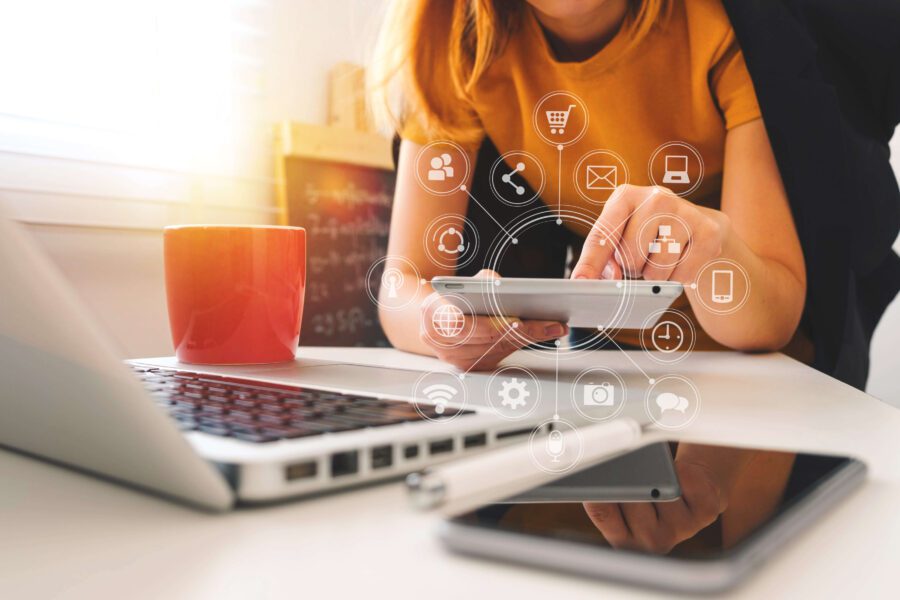With increased browsing becoming a pandemic pastime, you want to stand out from the pack by creating a sense of discovery for shoppers. Through the use of product bundles and collections, brands can not only foster that feeling, but also:
- Effectively merchandise product sets
- Improve Average Order Value (AOV) and conversion rates
- Provide the type of flexibility and convenience today’s shoppers demand
- And more!
Used together, these two ecommerce features don’t just pair well, they can elevate your shopping experience.
What’s the Difference Between Product Bundles and Collections?
A bundle allows a retailer to sell several products together as a fixed group, usually at a price lower than purchasing the set of products individually.

A collection creates a product grouping centered around key themes (“furniture collection”) or seasons (“summer fashion”) that people can browse and mix and match as they see fit.

In apparel retail, a collection might be a page for items that are “new this spring” and include products from a new lookbook. Meanwhile, a product bundle might be a combo that includes a pair of socks and sneakers. In home goods, a collection could be centered around a “dining room” theme, and include furniture, lamps and tableware, while a bundle may fit a specific theme like “picture hanging” and include a picture frame, screws, a hammer, and a measuring tape bundled together at an attractive price.
Collections invite configurability and interaction from the user and may include highly engaging content elements in the purchase process.
Bundles are more fixed in nature—people must buy the entire package.
Below are a few more differences in the two features. Kibo customers can enjoy both ecommerce platform features now.
| Functionality | Bundles | Collections |
| Order as a single product | Yes | No |
| Member products can be individually purchased | No | Yes |
| Merchandize member products | Fixed Set | Flexible Configurations |
| Select desired quantities of member products | Fixed | Flexible |
| Select options | Not allowed | Allowed |
| Promotions and discounts | Can be set up | Not allowed |
| Inventory for all member products must be available | Yes | No such restriction |
How Bundles and Collections Are Complementary
Luckily, retailers don’t have to pick between collections or bundles, as the two are complementary. Both collections and bundles can surface products that could or should go together that people may not think about. For example, Advance Auto Parts has a “hurricane preparedness” collection with a wide range of relevant products, as well as an “oil change” bundle that can be purchased all together.
Collections and bundles often include items that come from different categories. While bundles or collections may be merchandized based on purchase behavior, they don’t have to be. For example, a retailer could assemble their own collection, such as “stocking stuffers” or “spring cleaning products.” Or they could bundle and discount certain products as a way to move inventory.
The beauty of both collections and bundles is their flexibility. Both can be whatever a retailer wants them to be based on business needs and customer insights.
Why Group Products Into Bundles or Collections?
There are a variety of benefits to creating a bundle or collection of products—both for the retailer and for the customer:
Product collections and bundles both make it easy to purchase items. Collections allow shoppers to do so all on a single page, selecting sizes, colors and quantities that they want in a streamlined experience. A bundle makes it even more simple for them, allowing consumers to buy a group of items with a single click.
Both collections and product bundles help retailers by increasing the potential AOV. Retailers can highlight products that may not be searched as often, or that people may not know a retailer carries—creating more awareness across categories.
They’re not just effective, but also fun. Creating a collection can make a shopper more engaged, and gives them the opportunity to learn more about new products. The same applies to bundles, as seeing products grouped together can inspire customers in ways they hadn’t expected before a site visit.
Ultimately, companies should try out both in alignment with larger commerce strategies. Whether utilized in tandem or alone, the two features can drive added product discovery and deliver industry-leading customer experiences.




